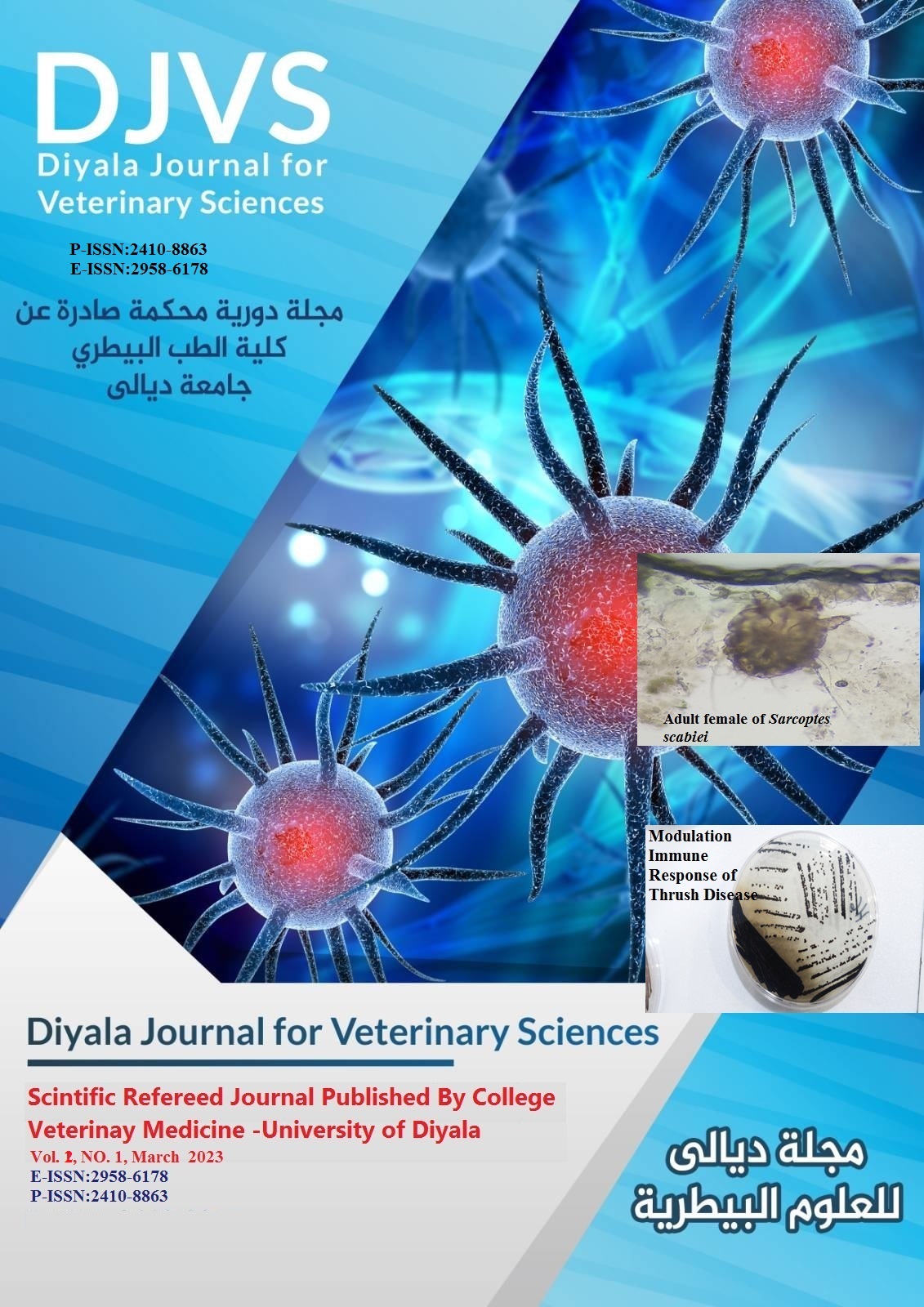Correlation Of Sociodemographic Factors and Clinical presentation Of Urinary Tract Infections Caused By Proteus mirabilis
DOI:
https://doi.org/10.71375/djvs.2023.01102Keywords:
Proteus mirabilis, urinary tract infection, Sociodemographic factors, Clinical symptomsAbstract
The current study included 250 individuals with symptoms of urinary tract infec-tions. Only 60 samples were positively growing (24%) and identified as Proteus mirabilis. The mean age of patients was (27.88 ± 11.680) years old. For the first age group (17-23) years old, (33.33 %) showed positive P. mirabilis growth ,.The least age group with positive culture was 3-9 and 10-16 years old ,each with 4% with significant difference (p value =0.000) .The educational level of (66. 67%) patients with positive P. mirabilis was the sec-ondary education,. Patients with primary education were positive P. mirabilis growth repre-sented 1.67% with significant difference (p value =0.000). A total of (93.33%) of positive pa-tients were using filtrated water . The residency of (63.33%) of positive cases was Baqubah, while the least was from Khalis and Khan keen (3.34%) with a significant difference (p value =0.000). The prominent symptom for UTI was flank pain in (63.33%) patients, followed by fever (45%) and hematuria (43.33%), with significant difference (p value =0.04). Dysuria represented the minimum complain (13.33%) of patients with positive P. mirabilis growth, with significant difference (p value =0.04).
In conclusion, infection with P. mirabilis represented a serious problem in children and adults, flank pain, hematuria and fever represent the prominent symptoms for UTI that might correlated with UTI .
Downloads
Downloads
Published
How to Cite
Issue
Section
License
Copyright (c) 2023 Ali Ibrahim Ali AL-Ezzy, Sarah Amer Al-Azawi, Ammar Riad Algburi

This work is licensed under a Creative Commons Attribution-NonCommercial 4.0 International License.



